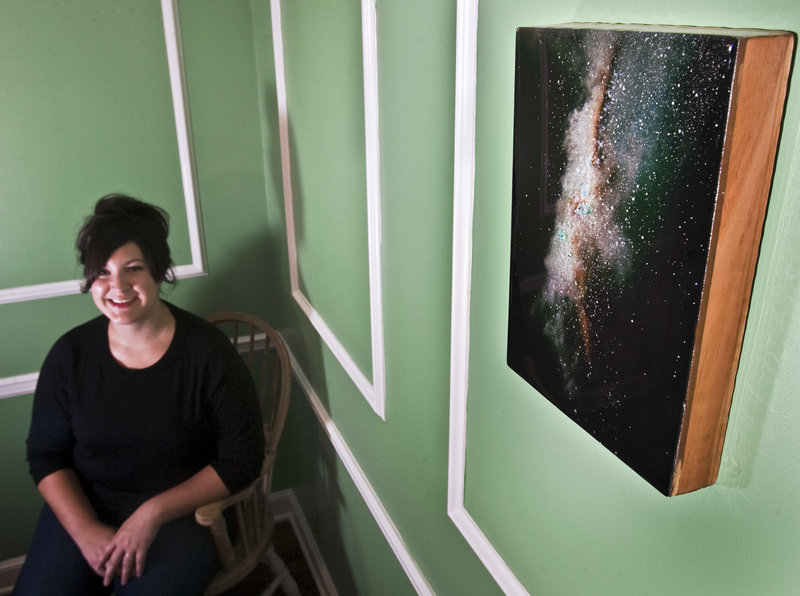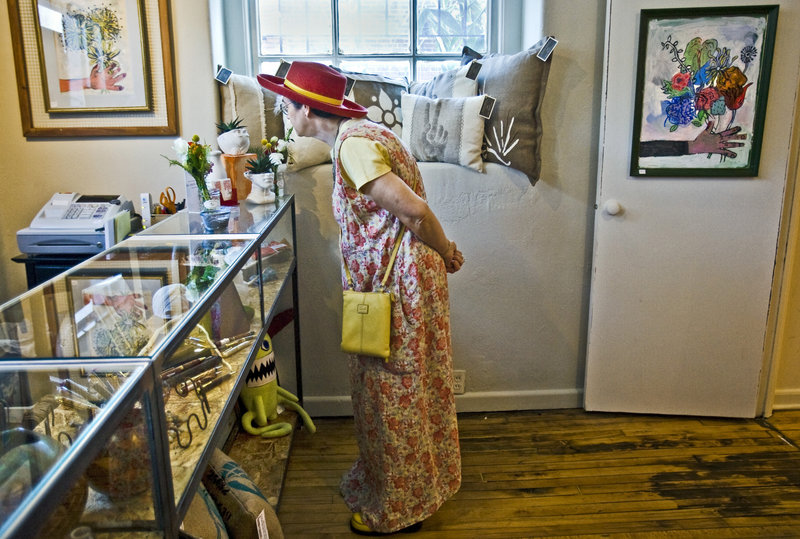KANSAS CITY, Mo. – Original art, in addition to family photographs and heirlooms, makes a home personal and individual.
But making the leap into collecting art can be intimidating, even to the bright and the bold. Perhaps that fear factor forms early, after you’ve visited art museums and spotted security guards standing on alert. Or maybe it comes from the notion that you have to be an art insider to even step inside a gallery. And, of course, there’s the price tag issue.
“You don’t have to have a lot of money to buy art,” says Cortney Novogratz, who along with her decorator husband, Robert, has an HGTV show, “Home by Novogratz.” Original art is a major part of their design projects, and they typically spotlight an artist in each episode.
“Original art reflects who you are as a person, as a family, much more than buying something from a chain store,” she says.
For those who haven’t purchased art before, Novogratz advises going to art fairs to get an overview of what’s out there. She has attended Art Basel Miami Beach, where more than 2,000 international artists exhibit their work.
“You discover what your tastes are,” she says. “You quickly learn there’s more out there than paintings, which is what people think of as art. There’s photography, ceramics, charcoal and pencil drawings, glass and furniture. Some designer chairs we purchased have really held their value.”
The next step is visiting galleries, intimidating at first for the uninitiated art seeker.
“They have the power, not the gallery owner,” says John O’Brien, owner of Dolphin, a gallery and custom framer in the West Bottoms area of Kansas City, Mo. “I always tell people to take their time. Get a feel for what you like and don’t like.”
Galleries are Novogratz’s preferred method for buying art.
“Yes, online is the world we live in, but I like to see where my money’s going and to meet the artist,” she says. “It makes art a richer experience.”
For 32-year-old Erica Wren of Leawood, Kan., though, the Web is a great research tool. A gallery site led last year to her first major art purchase.
“I was hopping around websites, as usual, being a design junkie,” says Wren, vice president of communications at Barkley, a Kansas City-based advertising and marketing agency. “I came across pieces by artist Eric Zener, and I was struck by them.”
So Wren made an appointment with Blue Gallery in the Crossroads Arts District to see some of the California artist’s works. Gallery owner Kelly Kuhn let Wren take home several on approval, a common try-before-you-buy practice among gallery owners and customers. Wren loved the piece “Bursting Through,” a photograph of a woman submerged in water that was painted with silver leaf on a light box. She discussed it with her family before buying.
“Usually I’m a muller-over when it comes to purchases for the home,” she says. “But the piece and its title resonated with me. Art shows a commitment to something unique. I think it’s important to support the arts, which is more under-funded than ever with the cuts nationwide.”
Wren now has a book of Zener’s art that he inscribed to her. She hopes to meet him one day.
Novogratz asks artists questions beyond what inspired their work. She’ll ask how many prints were made of a photograph. She also discusses decorative elements with the artist, such as framing: Lucite box or chipped wooden molding?
Artist Lonnie Powell of Lee’s Summit, Mo., enjoys meeting patrons and discussing his work, much of which is portraiture of African-American men and women in oil, acrylic, charcoal, pencil, pastel and watercolors. Like most artists, he prefers people purchase what he has created from his own mind’s eye and hands. But for a 60 percent retainer, he accepts commissions for custom work, a common practice.
“It helps prevent art by committee,” says Powell, whose work hangs in the Federal Reserve Bank of Kansas City and the H&R Block and Sprint headquarters. “That committee could be a family. It’s best when an individual makes decisions. Art is personal.”
Novogratz has found it works best when couples act as a unified front on purchasing art.
“It shouldn’t be stressful,” she says. “It should be fun. Remind each other we found each other, so we can definitely decide on pieces of art together.”
Copy the Story Link
Send questions/comments to the editors.




Success. Please wait for the page to reload. If the page does not reload within 5 seconds, please refresh the page.
Enter your email and password to access comments.
Hi, to comment on stories you must . This profile is in addition to your subscription and website login.
Already have a commenting profile? .
Invalid username/password.
Please check your email to confirm and complete your registration.
Only subscribers are eligible to post comments. Please subscribe or login first for digital access. Here’s why.
Use the form below to reset your password. When you've submitted your account email, we will send an email with a reset code.